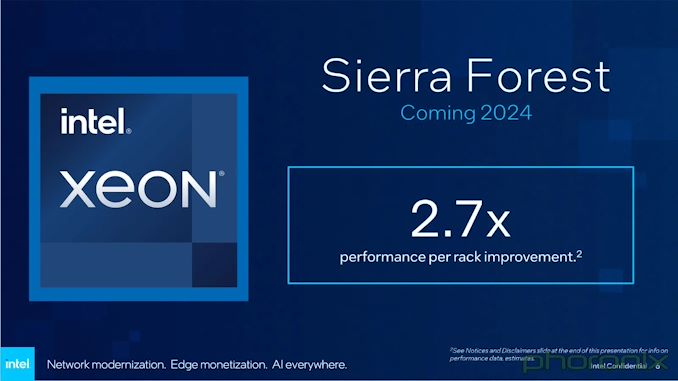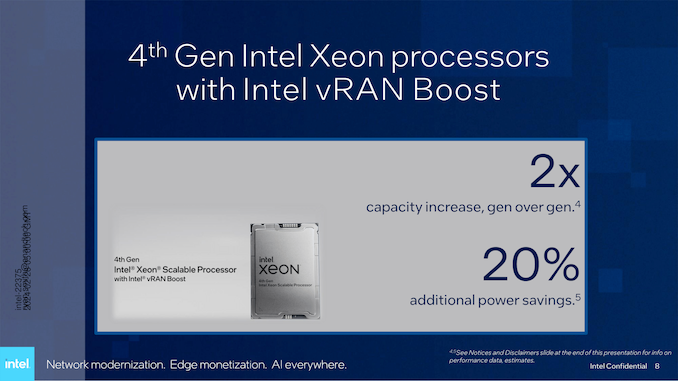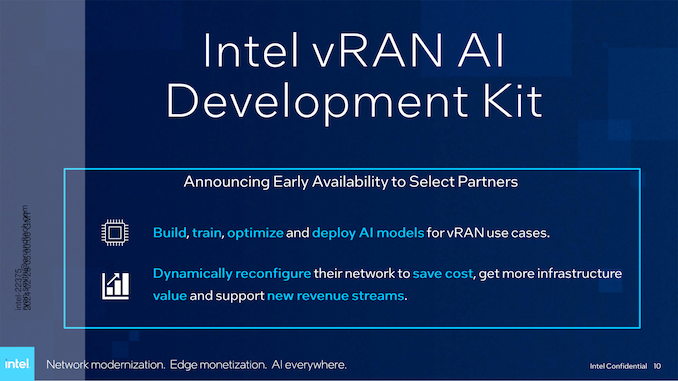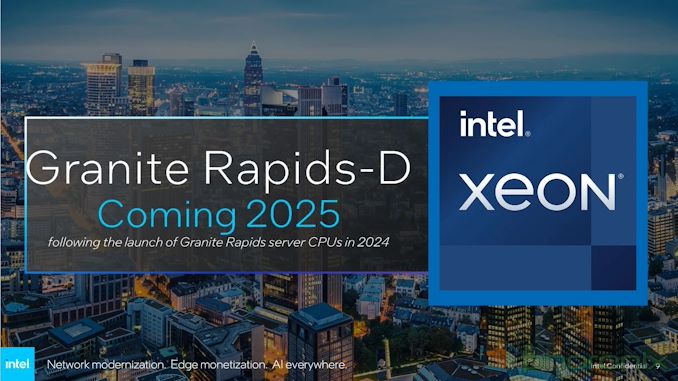At MWC 2024, Intel confirmed that the successor to the Ice Lake-D processor, Granite Rapids-D, will be available sometime in 2025. Additionally, Intel provided an update on its sixth-generation Xeon family, codenamed Sierra Forest, which will be available in 2025. Set to launch later this year, it will feature up to 288 cores designed specifically for vRAN network operators to improve the performance of 5G workloads per rack.
Designed to handle infrastructure, applications and AI workloads, these chips are designed to take advantage of current and future AI and automation opportunities, improve operational efficiency and cost of ownership for next-generation applications, and reflect Intel’s expertise across a variety of foundations. The vision of integrating “AI Everywhere” into facilities.
Intel Sierra Forest: Up to 288 high-efficiency cores, expected to be launched in the second half of 2024
Intel’s first announcement at MWC 2024 focused on its upcoming Sierra Forest platform, which is scheduled to launch in the first half of 2024. Intel originally announced in February 2022 during the Intel Investor Conference that it would split its server roadmap into performance (P)-only solutions and efficiency (E) cores. We already know that Sierra Forest’s new chips use the full E-core architecture, designed for maximum efficiency in scale-out, cloud-native, and closed environments.
These chips utilize CPU chiplets built on Intel 3 process as well as dual I/O chiplets based on Intel 7 node. This combination enables a scalable architecture that can accommodate increasing core counts by adding more chiplets, optimizing the performance of complex computing environments.

Intel’s Sierra Forest is Intel’s Xeon processor series with an all-E-core design and is expected to be equipped with up to 288 E-cores per socket, thereby significantly improving energy efficiency. Intel also claims that starting in 2021, Sierra Forest is expected to deliver 2.7x the performance per rack of an unspecified platform; this could be Ice Lake or Cascade Lake, but Intel didn’t mention which one.

Additionally, Intel is promising up to 30% infrastructure power management savings through Sierra Forest, as its Infrastructure Power Manager (IPM) application is now available for the 5G core. Power management and efficiency are increasingly serious challenges for network operators, so IPM is designed to help network operators optimize energy efficiency and save TCO.
Intel also includes vRAN, which is critical to modern mobile networks, and many operators are foregoing the choice of specific hardware in favor of virtualized radio access networks (vRAN). Intel said that using vRAN Boost, the integrated accelerator within the Xeon processors, the fourth-generation Xeon should be able to reduce power consumption by about 20% while doubling the available network capacity.

Intel’s push for “AI Everywhere” is also an ongoing focus, with the role of artificial intelligence in vRAN management becoming increasingly important. Intel announced the launch of the vRAN AI development kit, which is available to select partners. This enables partners and 5G network providers to develop AI models to optimize vRAN applications, customize vRAN-based functions according to more use cases, and adapt to changes in these scenarios.
Intel Granite Rapids-D: Edge solutions coming in 2025
Intel’s Granite Rapids-D is designed for edge solutions and is designed to enhance Intel’s role in 2025 virtual radio access network (vRAN) workloads. Intel is also promising significant efficiency improvements and some vRAN Boost optimizations, similar to what’s expected on Sierra Forest. Set to go along with the current Ice Lake-D for the edge; Intel expects to use the performance (P) cores used in Granite Rapids server parts and optimize the V/F curve designed for the low-power Edge platform. According to Intel, the previous generation fourth-generation Xeon platform effectively doubled vRAN capacity, enhanced network capabilities, and reduced power consumption by up to 20%.

Granite Rapids-D is designed to further these advancements, leveraging Intel AVX for vRAN and integrated Intel vRAN Boost acceleration to deliver significant cost and performance advantages globally. While Intel has yet to provide a specific date (or month) when we can expect to see Granite Rapids-D in 2025, Intel is currently sampling these next-generation Xeon-D processors with partners, aiming to ensure they are ready when they launch. Listing platform.